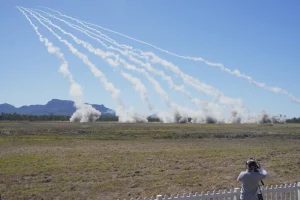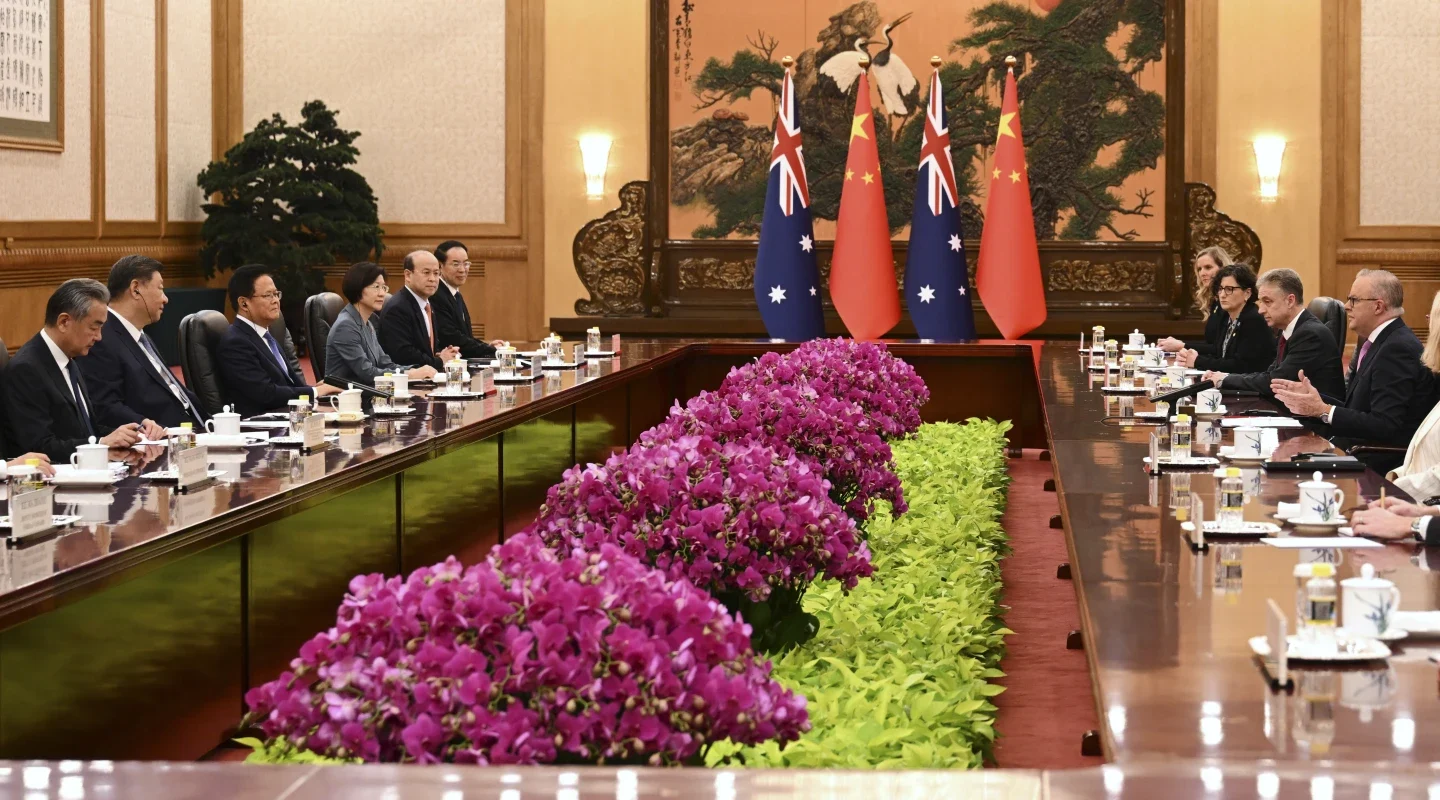Australian Prime Minister Anthony Albanese met with Chinese President Xi Jinping in Beijing on Tuesday, seeking to deepen trade ties despite their differences over regional security and human rights at talks Tuesday in Beijing.
The Chinese leader told the Australian PM that seeking common ground while setting aside differences is in line with “the fundamental interests of our two countries and our two peoples.”
Albanese concurred with Xi’s remark, saying “That approach has indeed produced very positive benefits for both Australia and for China.”
Australia, like many countries in the Asia-Pacific region, is caught between China and the United States. Its economy is heavily dependent on exports to China, including iron ore for the steel industry. It also shares America’s concerns with China’s human rights record and its growing military activity in the Pacific, including in waters near Australia, reports AP.
Albanese has sought to repair Australia’s relationship with China since his election in 2022.
“One in four of our jobs depends upon trade,” he said at a news conference in Shanghai on Monday. He noted Australia’s efforts to diversify its trade by expanding ties with Southeast Asian nations such as Indonesia and Singapore.
Albanese is in Beijing at the midpoint of a weeklong trip to China that started in Shanghai, China’s commercial capital, where government and business leaders from the two countries discussed deepening cooperation in tourism and reducing carbon emissions in iron ore mining and steel production.
The visit comes amid the largest-ever war-fighting drills in Australia are underway. The Exercise Talisman Sabre is expected to attract the attention of Chinese spy ships.
Australia launched missiles from its M142 High Mobility Artillery Rocket System, known as HIMARS, on Monday during live-fire exercises at the Shoalwater Bay Training Area, a 4,500 square kilometer (1,700 square mile) Outback expanse in Queensland state. The HIMARS launchers were recently bought from the United States.

Talisman Sabre began in 2005 as a biennial joint exercise between the United States and Australia.
This year, more than 35,000 military personnel from 19 nations, including Canada, Fiji, France, Germany, India, Indonesia, Japan, the Netherlands, New Zealand, Norway, Papua New Guinea, the Philippines, South Korea, Singapore, Thailand, Tonga, and the United Kingdom, will take part over three weeks, Australia’s defence department said.
Malaysia and Vietnam are also attending as observers.
The exercise will also take place in Papua New Guinea, Australia’s nearest neighbour. It is the first time Talisman Sabre activities have been held outside Australia.
Chinese surveillance ships have monitored naval exercises off the Australian coast during the last four Talisman Sabre exercises and were expected to surveil the current exercise, Defence Industry Minister Pat Conroy said.
“The Chinese military have observed these exercises since 2017. It’d be very unusual for them not to observe it,” Conroy said. “We’ll adjust accordingly. We’ll obviously observe their activities and monitor their presence around Australia, but we’ll also adjust how we conduct those exercises,” he added.
Conroy said the Chinese were not yet shadowing ships as of Sunday.
The exercise officially started on Sunday with a ceremony in Sydney attended by Deputy Commanding General of US Army Pacific Lt Gen JB Vowell and Australia’s Chief of Joint Operations Vice-Admiral Justin Jones.
The exercise, showcasing Australia’s defence alliance with the US, started a day after the Australian PM began his six-day visit to China.
“That would be nothing unusual. That has happened in the past and I’ll continue to assert Australia’s national interest, as I do,” Albanese told reporters in Shanghai on Monday. Albanese also noted that while he had visited the United States as prime minister five times, he had only been to China twice.
The Australian leader has been criticised at home for failing to secure a face-to-face meeting with US President Donald Trump. “I look forward to a constructive engagement with President Trump. We have had three constructive phone conversations,” Albanese said.


